Network Performance Improvements with SD-WAN
What can drive the most significant, sustainable and cost-effective improvements in your network’s performance? Today’s most advanced technology – Software Defined Wide Area Networking, or SD-WAN.
SD-WAN allows for multiple WAN connections to replace the traditional individual private WAN connection, aggregating bandwidth and duplicating traffic, allowing the links to work continuously. It enables software defined control and millisecond-level management to multiple WAN connections that guarantees businesses do not have outages, experience degraded performance or pay too much for connectivity.
At Ecessa, we help organizations deploy SD-WAN using a guided process and real-time data to prove the return on investment of a SD-WAN solution from the start. We’ve managed SD-WAN deployments for industry leading organizations in banking and finance, healthcare, retail, hospitality, manufacturing, transportation and more.
This report uses real customer data collected over a 60-day period to show how SD-WAN has driven network performance improvements in the areas of packet latency, packet loss, packet reordering, number of outages that occurred which were avoided and the delay time to failover to another WAN link.
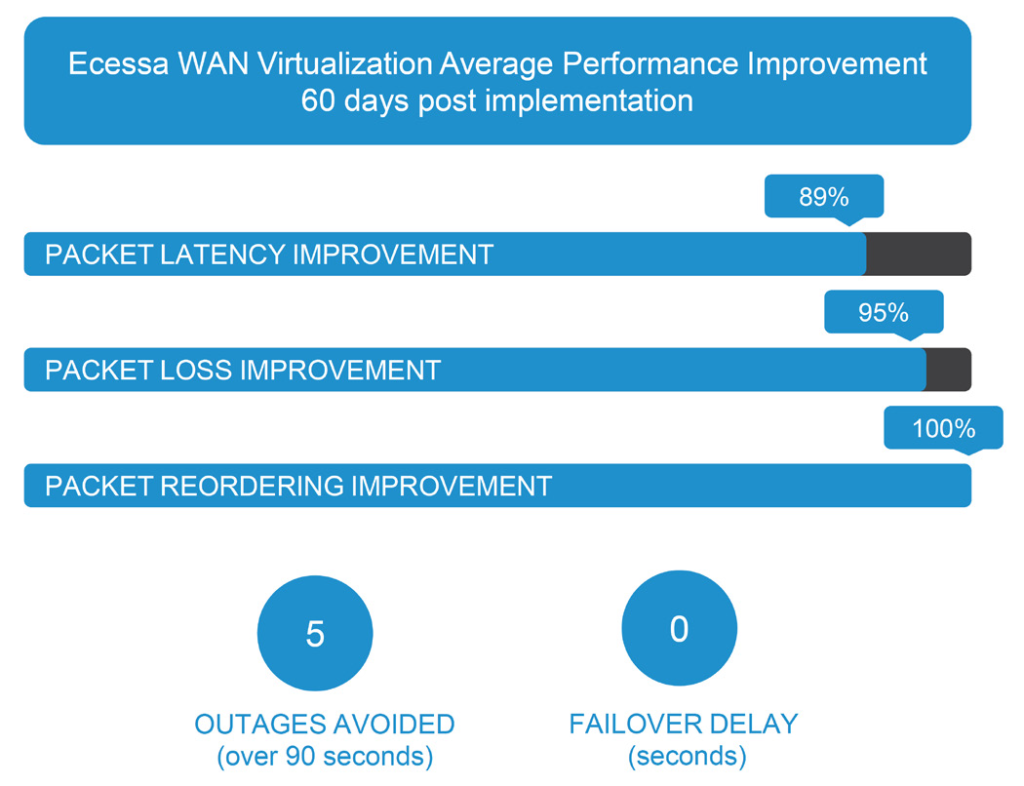
60-day measurement of network performance improvements driven by Ecessa SD-WAN
Use Case and Data
A leading premium multi-site grocer provided a great example of improved network performance through the deployment to SD-WAN. The regional retail chain needed more bandwidth and more reliable bandwidth. Before implementing SD-WAN, they experienced frequent outages, dropped VoIP calls, missed credit card transactions and had to regularly deploy late night changes and emergency patches. The graphs on the following pages illustrate how the Ecessa SD-WAN solution vastly improved network performance – and their daily operations.
Graph 1
Latency
Network latency is an expression of how much time it takes for a data
packet to get from one designated point to another. We calculate
latency by measuring Round Trip Time (RTT) through the SD-WAN
tunnels.
We test latency by sending test pings and measuring the time needed to traverse the WAN lines.
Note the performance improvement in the bottom chart when SD-WAN is applied to the two WAN links.
Effectively, SD-WAN chooses the best path for each packet and steers
it to the best performing WAN line.
For reference, WAN Line 1 used a private MPLS connection, WAN Line 2 used a public broadband connection and the bottom graph shows the combined SD-WAN network using both lines.
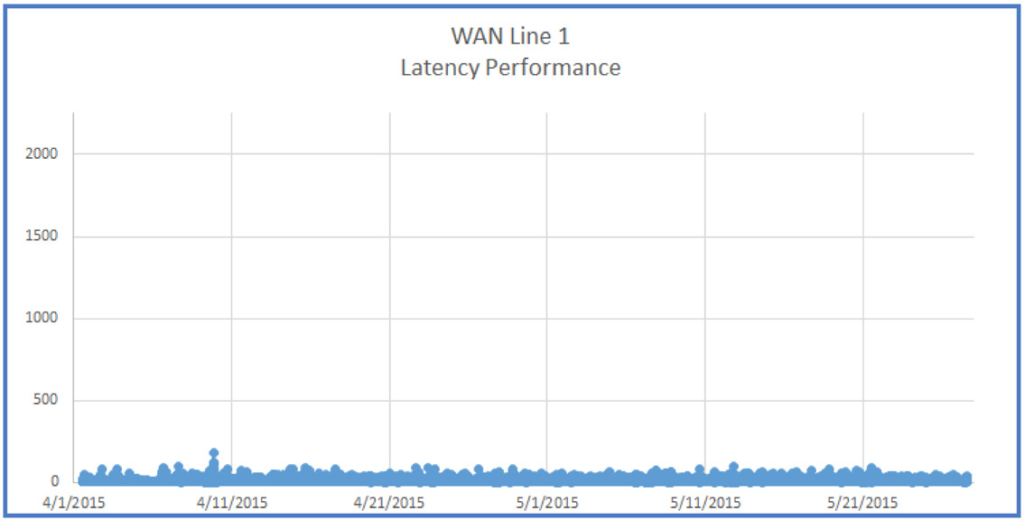
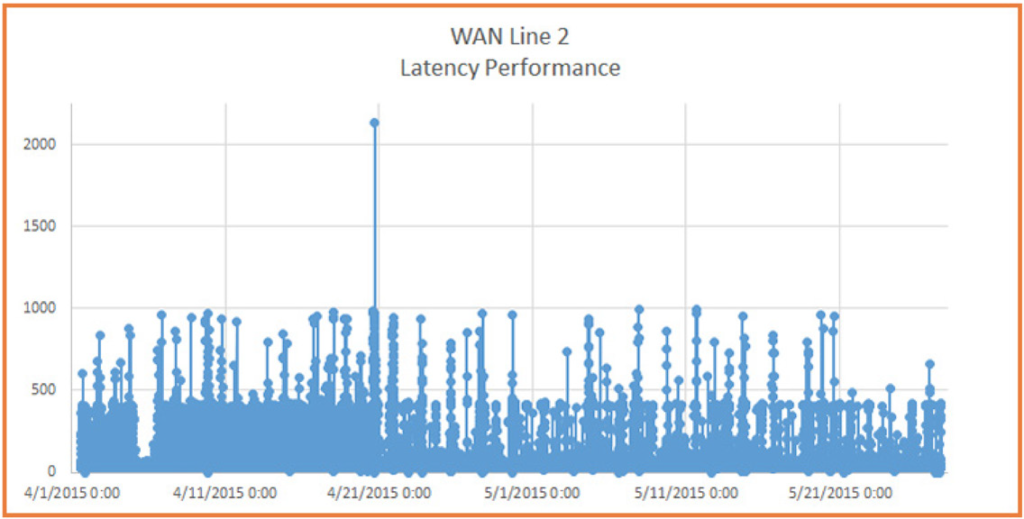
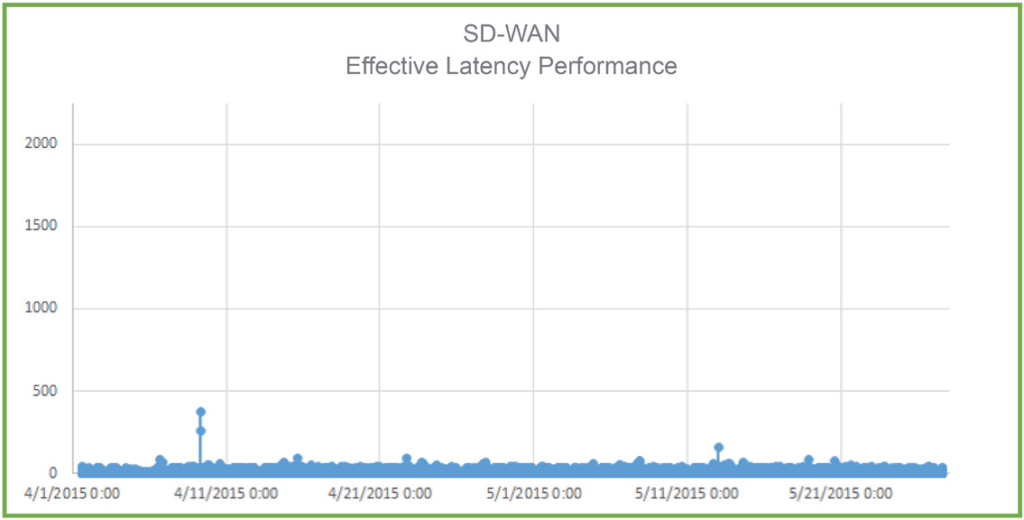
Graph 2
Packet Loss
Packet loss is the failure of one or more transmitted data packets to arrive at their destination.
We use the same test pings mentioned on the previous page to measure how many test pings return versus how many are sent.
In the bottom chart, note the performance improvement when SD-WAN is applied to the two WAN links.
Again, SD-WAN is steering the packets over the best performing WAN line at that moment of time.
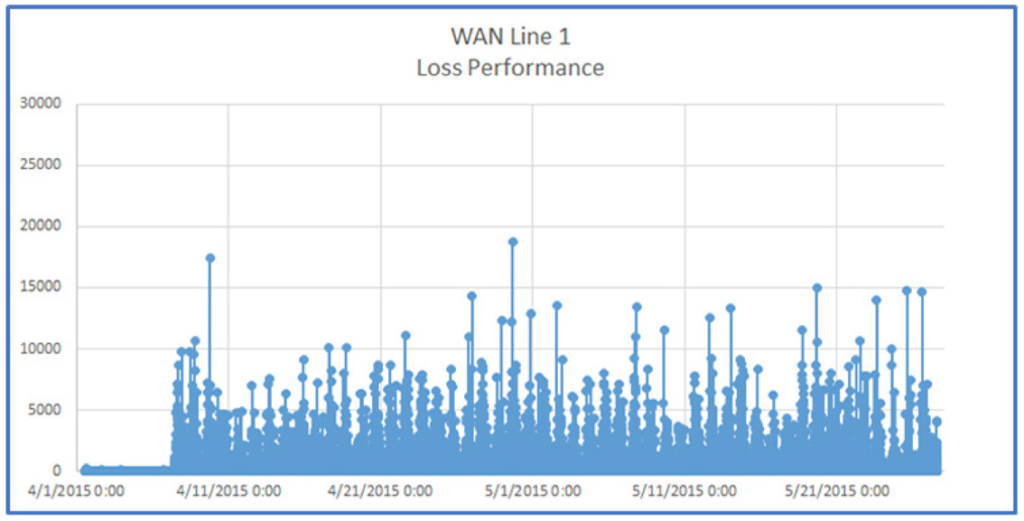
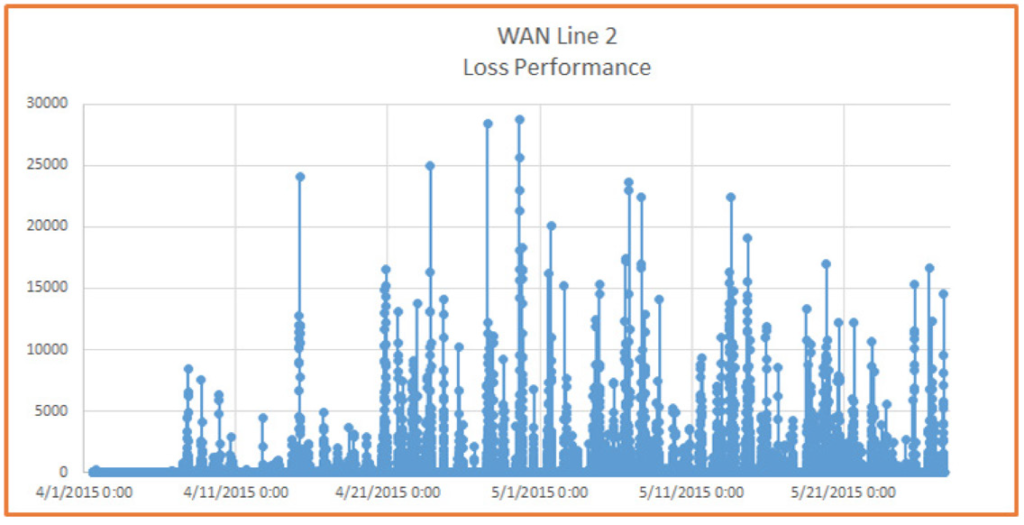
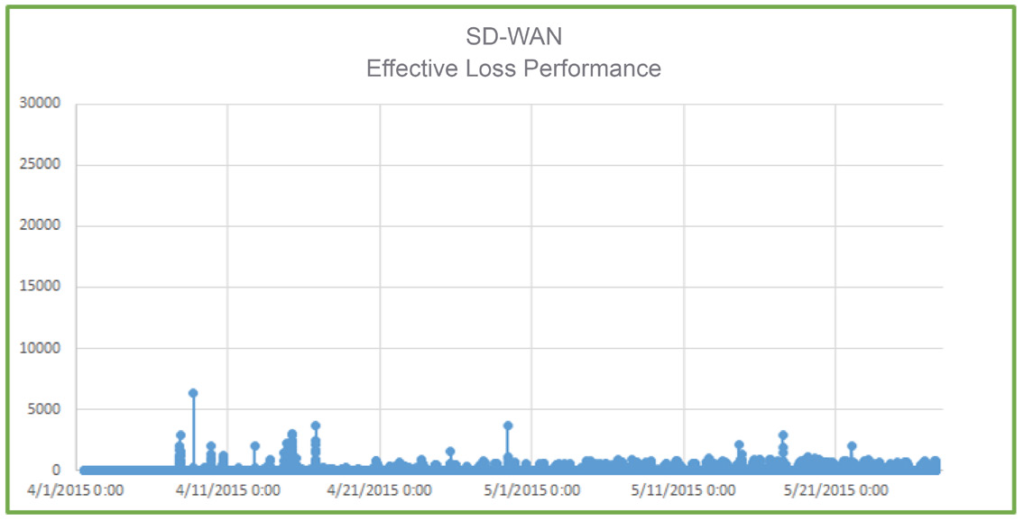
Graph 3
Packet Re-Order
Packet re-ordering is the measurement of how many packets arrive out of proper sequential order. We measure this by sending test packets and monitoring how many return out of proper order; if packets 5, 6 and 7 return before packets 2, 3 and 4 we count that as 50% re-ordering. Note the performance improvement in the bottom graph when SD-WAN is applied to the two WAN links.
In the case of packet re-ordering, SD-WAN improves the performance in two ways. First, SD-WAN can wait a predetermined time and attempt to put the sequence back into proper order. This causes a short delay.
Secondly, with packet duplication, SD-WAN will simply drop packets that are not in order and take those that are. This is a faster, more brute force method of eliminating reordering.
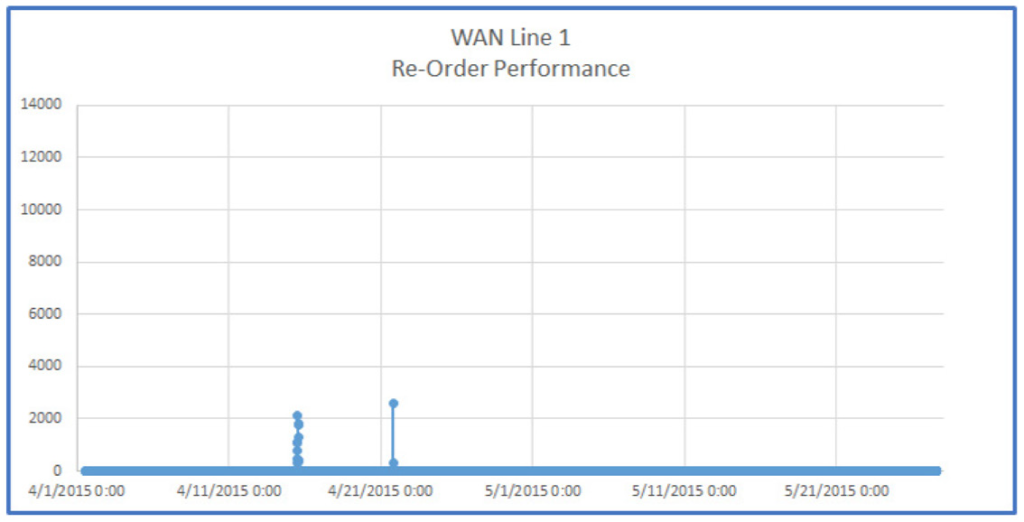
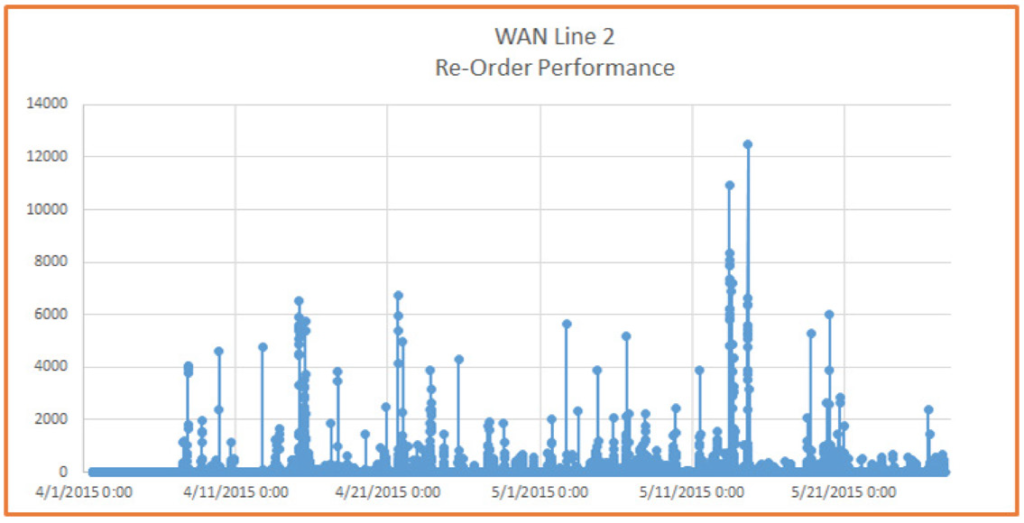
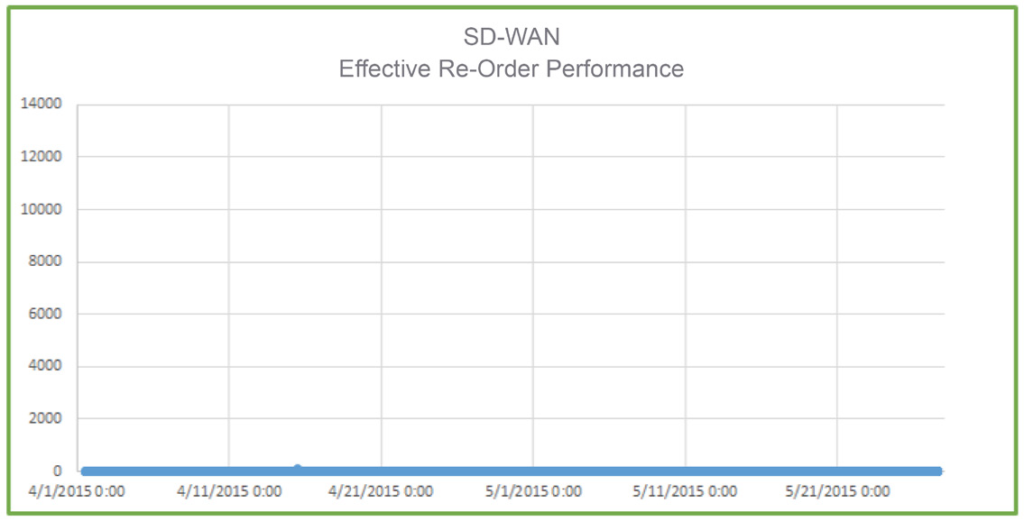
Graph 4
WAN Link Outages
SD-WAN eliminated WAN link outages. We constantly monitor the health of each WAN link using micro parametric performance data (latency, loss, re-ordering) and macro stability data (complete loss of test pings). The five outage events reported to the right lasted 90 seconds or longer. In fact, a total of 23 outages (18 of which lasted less than 90 seconds) occurred and were avoided.
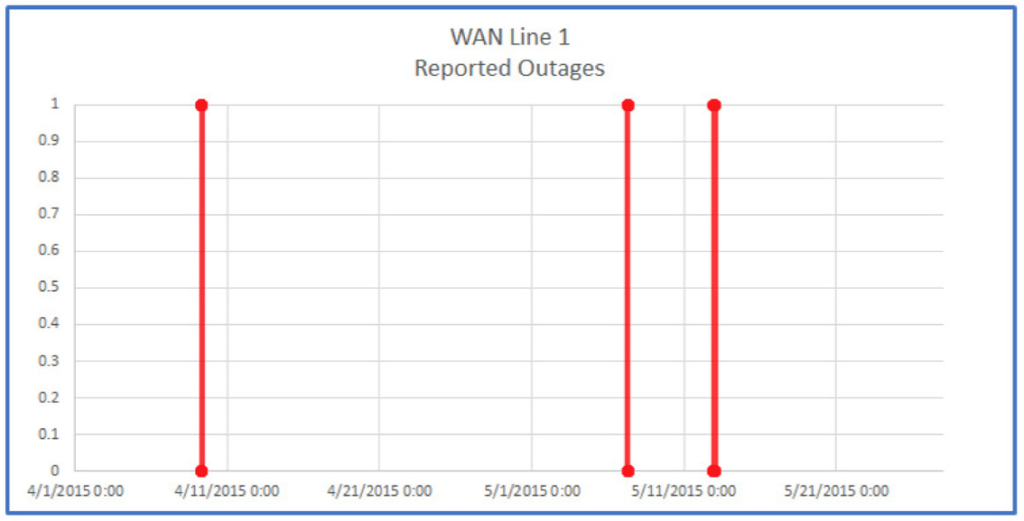
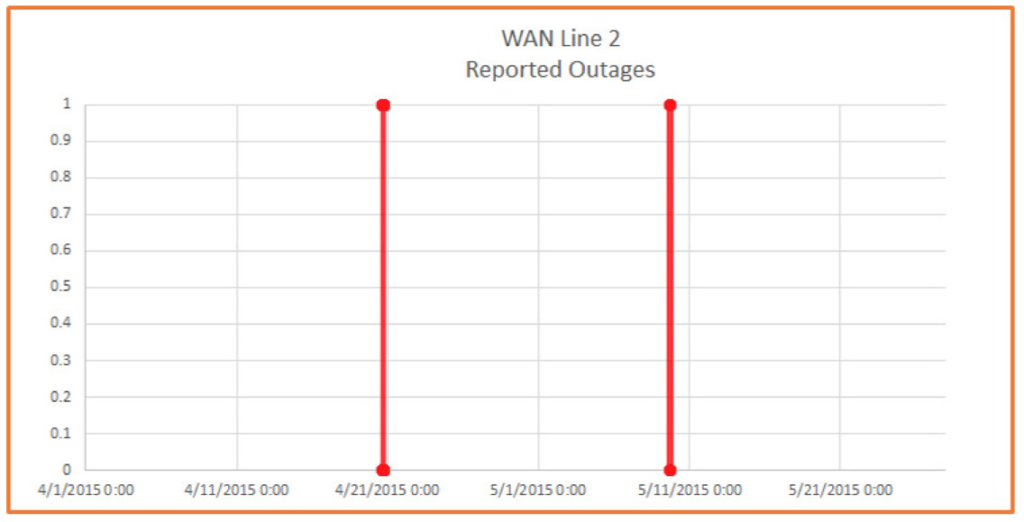
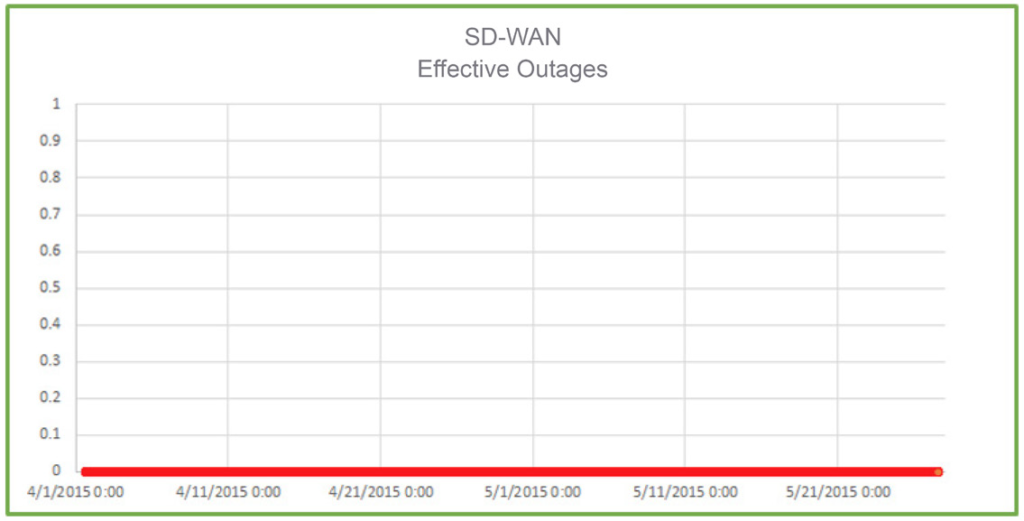
Graph 5
Overall Performance Improvement
When you look at the measurements side by side, the improvements in performance are even more clearly visible. SD-WAN improves not only the performance of the broadband connection (WAN 2), it also provides quality of service above that of the MPLS link (WAN 1). The combined performance of SD-WAN dramatically exceeds that of either individual link, at that moment in time. Effectively providing improved performance and resiliency to outages – these are the key benefits to SD-WAN.
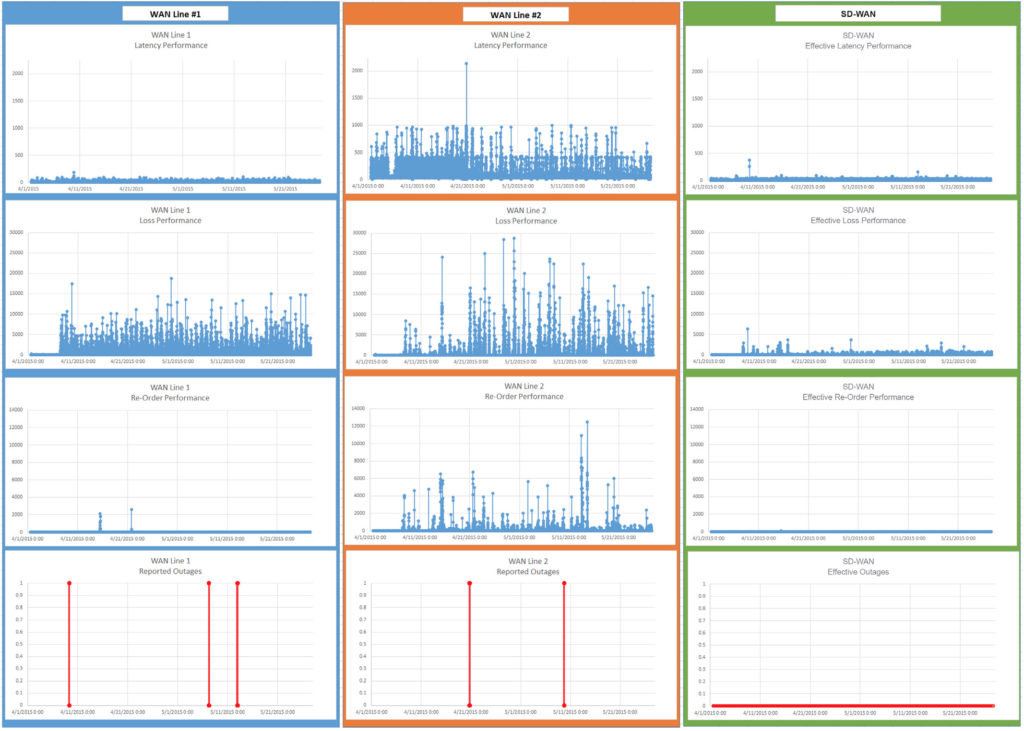
Implementing a SD-WAN Solution
Understanding the tremendous benefits offered by SD-WAN is just the beginning. To achieve the promised benefits of any technology, you need to carefully plan and execute your deployment. Start by understanding your goals with metrics and scorecards. It’s imperative to gather real network
performance data to set a baseline, then analyze and assess what benefits you can realistically achieve.
Setting up SD-WAN to improve your network performance and continuing to gather data will allow your organization to measure against the baseline and understand how – and how much – SD-WAN makes an impact on your network.
Once the value has been established, it’s time to make plans to expand SD-WAN to more locations, turn up additional features and to do any fine tuning. Network architecture is complex and there is never just one solution to fit all problems.
Make sure you think about some of these must have functions in your network:
Firewall
Security is top of mind for all IT professionals today and this is a must have feature for all network entry points. Each solution has a different level of sophistication, but the basics are identifying policies for which items can come or go through your WAN connections.
Voice over IP (VoIP) Proxy
Digital telephones are everywhere today; that old copper line that you used growing up is being replaced with fiber, wireless or standard Gigabit Ethernet. Regardless of how it finds its way to your door, once on premise you need to decode those small packets as voice. Prioritization and
redundancy for the voice traffic quickly becomes less of a “nice to have” and more of a critical aspect to the network.
Quality of Service (QoS)
There is a lot of data streaming through your network every millisecond and not all WAN optimization gear can help prioritize where that data goes once it leaves your network closet. Make sure that you are sending that Point of Sale data through the best WAN connection and that guest Wi-Fi traffic can take the less expensive broadband connection, if it is up and running.
WAN Optimization
Inspecting, compressing and caching data before it leaves is always a good idea; much like the old adage of clean before you move. Clean house, make sure employees are not using precious bandwidth for low priority distractions. WAN optimization is a great complementary technology to
SD-WAN – a high performing network needs both.
Time to Impact and the Deployment Process
We collect data as part of our guided deployment process to help our clients prove the value of their investment in SD-WAN as quickly as possible. Using real data from their own networks helps support decisions. Understanding the ROI before rolling the deployment throughout the organization ensures
success for everyone involved. Ecessa’s Guided Deployment Process makes benefiting from SD-WAN easy by taking you through the process step-by-step – discovering all needs and answering all questions. In less than a month – not many months – we set the baseline, go live and launch. Here’s a look at the phases of the process.
Phase 1:
- Install Ecessa equipment in Translucent/Bridge mode
- Gather network performance data for a few days
- Analyze data and define metrics for deployment success
Phase 2:
- Enable/turn on Ecessa SD-WAN features
- Gather network performance data for a few days
- Analyze data and capture improvement metrics
Phase 3:
- Review performance scorecard with customer
- Create plans for additional sites, features or updates
- Schedule the next Ecessa SD-WAN site deployments

